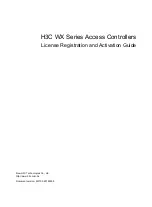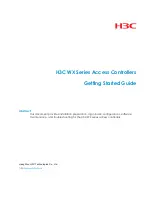
5.2 b: Application
130
YASKAWA ELECTRIC SIEP C710616 30B YASKAWA AC Drive T1000A Technical Manual
n
b5-01: PID Function Setting
Enables or disables the PID operation and selects the PID operation mode.
Setting 0: PID disabled
Setting 1: Output frequency = PID output 1
The PID controller is enabled and the PID output builds the frequency reference. Uses D control for the difference
between the feedback and setpoint (displayed in monitor U5-02).
Setting 2: Output frequency = PID output 2
The PID controller is enabled and the PID output builds the frequency reference. D control is used on the feedback signal
(displayed in monitor U5-06).
Setting 3: Output frequency = frequency ref PID output 1
The PID controller is enabled and the PID output is added to the frequency reference. The PID input is D controlled.
Setting 4: Output frequency = frequency ref PID output 2
The PID controller is enabled and the PID output is added to the frequency reference. The PID feedback is D controlled.
n
b5-02: Proportional Gain Setting (P)
Sets the P gain that is applied to the PID input. A large value will tend to reduce the error, but may cause instability
(oscillations) if set too high. A low value may allow too much offset between the setpoint and feedback.
n
b5-03: Integral Time Setting (I)
Sets the time constant that is used to calculate the integral of the PID input. The smaller the integral time set to b5-03, the
faster the offset will be eliminated. If set too short, it can cause overshoot or oscillation. To turn off the integral time, set
b5-03 = 0.00.
n
b5-04: Integral Limit Setting
Sets the maximum output possible from the integral block. Set as a percentage of the maximum frequency (E1-04).
Note:
On some applications, especially those with rapidly varying loads, the output of the PID function may show a fair amount of
oscillation. To suppress this oscillation, a limit can be applied to the integral output by programming b5-04.
n
b5-05: Derivative Time (D)
Sets the time the drive predicts the PID input/PID feedback signal based on the derivative of the PID input/PID feedback.
Longer time settings will improve the response but can cause vibrations. Shorter settings will reduce the overshoot but
also reduce the controller responsiveness. D control is disabled by setting b5-05 to zero seconds.
No.
Parameter Name
Setting Range
Default
b5-01
PID Function Setting
0 to 4
0
No.
Name
Setting Range
Default
b5-02
Proportional Gain Setting (P)
0.00 to 25.00
1.00
No.
Name
Setting Range
Default
b5-03
Integral Time Setting (I)
0.0 to 360.0 s
1.0 s
No.
Name
Setting Range
Default
b5-04
Integral Limit Setting
0.0 to 100.0%
100.0%
No.
Name
Setting Range
Default
b5-05
Derivative Time (D)
0.00 to 10.00 s
0.00 s
















































